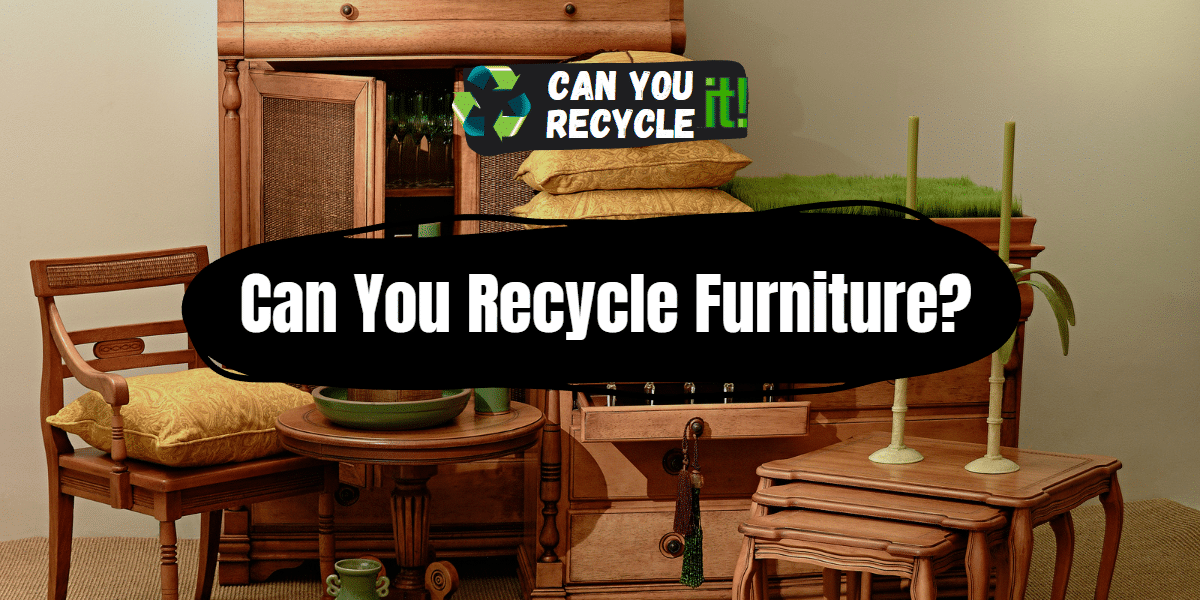The answer to whether furniture can be recycled is not a simple yes or no. It depends on various factors, such as the materials used, the condition of the furniture, and the availability of recycling facilities. While some furniture can be recycled, others may require alternative disposal methods.
Furniture plays a significant role in our lives, providing comfort and functionality. However, as furniture gets old or damaged, the question arises: can you recycle furniture? In this article, we will explore the possibilities of recycling furniture, along with the dos and don’ts, a step-by-step guide, and the environmental impact of such recycling efforts.
Table of Contents
Do’s and Don’ts
Recycling furniture requires adherence to specific guidelines to ensure effective and responsible recycling practices. Here are some dos and don’ts to consider:
Dos
- Assess Reusability: Before considering recycling, evaluate if the furniture can be repaired, refurbished, or donated for reuse.
- Separate Materials: If the furniture is recyclable, separate different materials like wood, metal, and upholstery to facilitate the recycling process.
- Research Local Recycling Options: Look for local recycling centers or organizations that accept furniture for recycling. Ensure they have the necessary infrastructure and expertise.
Don’ts
- Dispose of Furniture in Landfills: Avoid sending furniture to landfills as it contributes to waste accumulation and environmental degradation.
- Mix Different Materials: Do not mix different materials together when recycling furniture, as it can complicate the recycling process and reduce the quality of the recycled materials.
5-Step Guide to Recycle Furniture
If you are interested in recycling furniture, follow this step-by-step guide:
Step 1
Evaluate Furniture: Assess the condition of the furniture and determine if it is suitable for recycling or if it can be repaired or repurposed.
Step 2
Disassemble and Separate: If possible, disassemble the furniture into its individual components and separate different materials like wood, metal, fabric, or plastic.
Step 3
Research Local Recycling Options: Look for local recycling facilities, furniture banks, or charities that accept furniture for recycling. Ensure they accept the specific materials you have separated.
Step 4
Prepare for Recycling: Clean the furniture thoroughly and remove any non-recyclable parts, such as foam or non-metallic hardware. Follow any specific guidelines provided by the recycling facility.
Step 5
Transport and Donate: Arrange for furniture transportation to the designated recycling facility or donation center. Some facilities may offer pick-up services for more oversized items. Alternatively, consider donating the furniture to those in need.
What to Do with Furniture That Cannot be Recycled
Not all furniture can be recycled due to factors like poor condition, hazardous materials, or lack of recycling options. In such cases, explore alternative options:
- Donate for Reuse: If the furniture is usable, consider donating it to charities, shelters, or second-hand stores. It can benefit someone else and extend the furniture’s lifespan.
- Repurpose or Upcycle: Get creative and repurpose the furniture for other uses within your home or as DIY projects. This allows you to give the furniture a new purpose while reducing waste.
Environmental Impact of Recycling Furniture
- Reduces landfill waste: Recycling furniture prevents it from ending up in landfills, occupying valuable space, and contributing to pollution and greenhouse gas emissions.
- Conserves natural resources: Recycling furniture reduces the demand for new materials like wood, metal, fabric, and foam, conserving precious natural resources and reducing the need for resource-intensive manufacturing processes.
- Reduces energy consumption: Recycling furniture requires less energy than manufacturing new furniture from raw materials. It helps lower overall energy consumption and reduces greenhouse gas emissions associated with production processes.
- Decreases pollution: Furniture recycling minimizes the pollution caused by extracting, processing, and transporting raw materials. By reusing or repurposing furniture, we can reduce environmental pollution, including air and water pollution.
FAQs for Can You Recycle Furniture
Can upholstered furniture be recycled?
Yes, upholstered furniture can be recycled. However, the process may involve separating the upholstery from the frame and recycling the materials separately.
Are all types of wood furniture recyclable?
Most types of wood furniture can be recycled, but the specific recycling options may depend on the type of wood and the local recycling facilities available.
What happens to recycled furniture?
Recycled furniture goes through a process where materials like wood, metal, or plastic are separated and transformed into new products or raw materials for manufacturing.
Is recycling furniture cost-effective?
The cost-effectiveness of recycling furniture depends on various factors, including the furniture’s condition, transportation cost, and the availability of recycling facilities. Consulting local recycling centers or organizations can provide more information.
Conclusion and final thoughts 💭
Recycling furniture is a sustainable approach that helps reduce waste and minimize the environmental impact of our consumption patterns. You can create a more sustainable future by following the dos and don’ts, using the step-by-step guide, and exploring local recycling options. Remember, even if recycling is impossible, alternative options such as donation or repurposing can extend the furniture’s life and reduce waste. Let’s make conscious choices and contribute to a greener world.





Leave a Reply